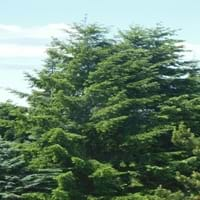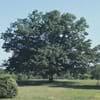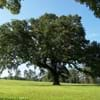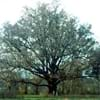Life Span
Perennial
Annual
Origin
Western United States, California, Canada, China
Europe, Asia
Types
Balsam Fir, Cannan Fir, Fraser Fir, Grand Fir
Admiral Pepper,Bell Pepper,Mohawk Pepper,Yolo Wonder Pepper
Number of Varieties
Not Available
Habitat
Moist Soils, Rocky areas
Cropland, Oil fields, Waste areas
USDA Hardiness Zone
4-7
4-9
AHS Heat Zone
7-1
Not Available
Sunset Zone
A2, A3, 1a, 1b, 2a, 2b, 3a, 3b, 4, 5, 6, 7, 9, 10, 14, 15, 16, 17
Not Available
Habit
Upright/Erect
Clump-Forming
Flower Color
Not Available
White
Flower Color Modifier
Bicolor
Not Available
Fruit Color
Sandy Brown
Green, Tan
Leaf Color in Spring
Dark Green
Green
Leaf Color in Summer
Dark Green
Not Available
Leaf Color in Fall
Dark Green
Green
Leaf Color in Winter
Dark Green
Green
Leaf Shape
Needle like
Egg-shaped
Plant Season
Spring, Summer, Fall, Winter
Not Available
Sunlight
Full Sun
Full Sun, Partial Sun
Growth Rate
Medium
Very Fast
Type of Soil
Clay, Loam
Clay, Loam, Sand
The pH of Soil
Acidic, Neutral
Acidic, Neutral, Alkaline
Soil Drainage
Well drained
Well drained
Bloom Time
Not Available
Early Spring, Spring, Late Spring, Late Fall, Early Winter, Winter, Late Winter
Tolerances
Shade areas
Pollution
Where to Plant?
Ground
Ground, Pot
How to Plant?
Seedlings, Stem Planting, Transplanting
Stem Planting, Transplanting
Plant Maintenance
Low
Medium
Watering Requirements
Keep the ground moist but not water-logged, Requires consistently moist soil
Prefer drip-irrigation instead of Over-head watering, Water Deeply
In Summer
Lots of watering
Lots of watering
In Spring
Moderate
Moderate
In Winter
Average Water
Average Water
Soil pH
Acidic, Neutral
Acidic, Neutral, Alkaline
Soil Type
Clay, Loam
Clay, Loam, Sand
Soil Drainage Capacity
Well drained
Well drained
Sun Exposure
Full Sun
Full Sun, Partial Sun
Pruning
No need to prune, No pruning needed
Prune ocassionally, Prune to control growth
Fertilizers
All-Purpose Liquid Fertilizer, fertilize every 2-3 weeks while growing
All-Purpose Liquid Fertilizer
Pests and Diseases
Beetles, Borers, Red blotch
Not Available
Plant Tolerance
Drought
Drought
Flowers
None
Insignificant
Flower Petal Number
Not Available
Single
Foliage Texture
Fine
Fine
Foliage Sheen
Matte
Not Available
Attracts
Insects
Not Available
Allergy
Skin rash
Not Available
Aesthetic Uses
Beautification, Landscape Designing, Showy Purposes, Used as Christmas tree
Not Used For Aesthetic Purpose
Beauty Benefits
Not Available
Not Available
Environmental Uses
Air purification, Nesting sites for birds
Air purification
Medicinal Uses
Burns, Cough, Sore throat, Stomach pain, Wounds
Not Available
Part of Plant Used
Whole plant
Not Available
Other Uses
Decoration Purposes, Economic Purpose, Oil is used for aromatherapy, Showy Purposes, Used As Food, Used for its medicinal properties, Used in biomass, Used in paper industry, Wood is used for making furniture, Wood is used for ship building, Wood is used in construction, Wood log is used in making fences
Unknown
Used As Indoor Plant
Yes
No
Used As Outdoor Plant
Yes
Yes
Garden Design
Alpine, Feature Plant, Foundation, Screening / Wind Break, Shade Trees
Not Available
Botanical Name
PSEUDOTSUGA menziesii
CARDAMINE hirsuta
Common Name
Douglas Fir
Hairy Bittercress
In Hindi
डगलस फ़िर
बालों वाली Bittercress
In German
Douglasfichte
Hairy Bittercress
In French
le sapin de Douglas
Bittercress Poilu
In Spanish
abeto Douglas
Bittercress Peludo
In Greek
έλατο Douglas
τριχωτές Bittercress
In Portuguese
Douglas Fir
Bittercress cabeludo
In Polish
daglezji
włochaty Bittercress
In Latin
Douglas abies
pilosus bittercress
Phylum
Tracheophyta
Magnoliophyta
Class
Pinopsida
Magnoliopsida
Order
Pinales
Brassicales
Family
Pinaceae
Brassicaceae
Genus
Pseudotsuga
Cardamine
Clade
Not Available
Not Available
Tribe
Not Available
Not Available
Subfamily
Not Available
Not Available
Number of Species
Not Available
Not Available
Season and Care of Douglas Fir and Hairy Bittercress
Season and care of Douglas Fir and Hairy Bittercress is important to know. While considering everything about Douglas Fir and Hairy Bittercress Care, growing season is an essential factor. Douglas Fir season is Spring, Summer, Fall and Winter and Hairy Bittercress season is Spring, Summer, Fall and Winter. The type of soil for Douglas Fir is Clay, Loam and for Hairy Bittercress is Clay, Loam, Sand while the PH of soil for Douglas Fir is Acidic, Neutral and for Hairy Bittercress is Acidic, Neutral, Alkaline.
Douglas Fir and Hairy Bittercress Physical Information
Douglas Fir and Hairy Bittercress physical information is very important for comparison. Douglas Fir height is 2,440.00 cm and width 610.00 cm whereas Hairy Bittercress height is 10.20 cm and width 5.10 cm. The color specification of Douglas Fir and Hairy Bittercress are as follows:
Douglas Fir flower color: Not Available
Douglas Fir leaf color: Dark Green
Hairy Bittercress flower color: White
- Hairy Bittercress leaf color: Green
Care of Douglas Fir and Hairy Bittercress
Care of Douglas Fir and Hairy Bittercress include pruning, fertilizers, watering etc. Douglas Fir pruning is done No need to prune and No pruning needed and Hairy Bittercress pruning is done Prune ocassionally and Prune to control growth. In summer Douglas Fir needs Lots of watering and in winter, it needs Average Water. Whereas, in summer Hairy Bittercress needs Lots of watering and in winter, it needs Average Water.





